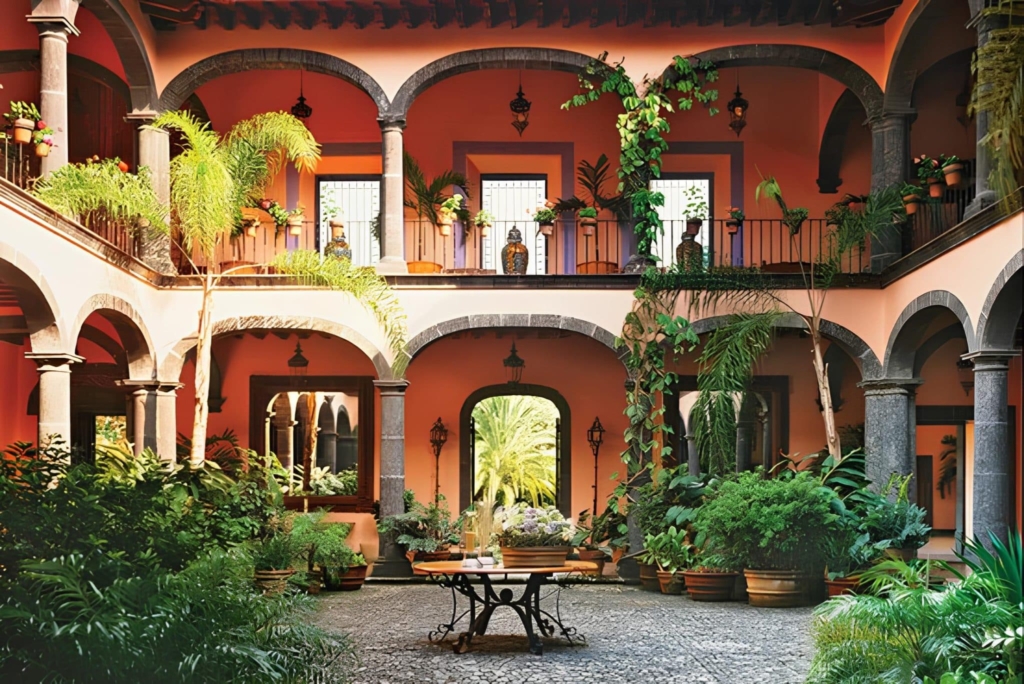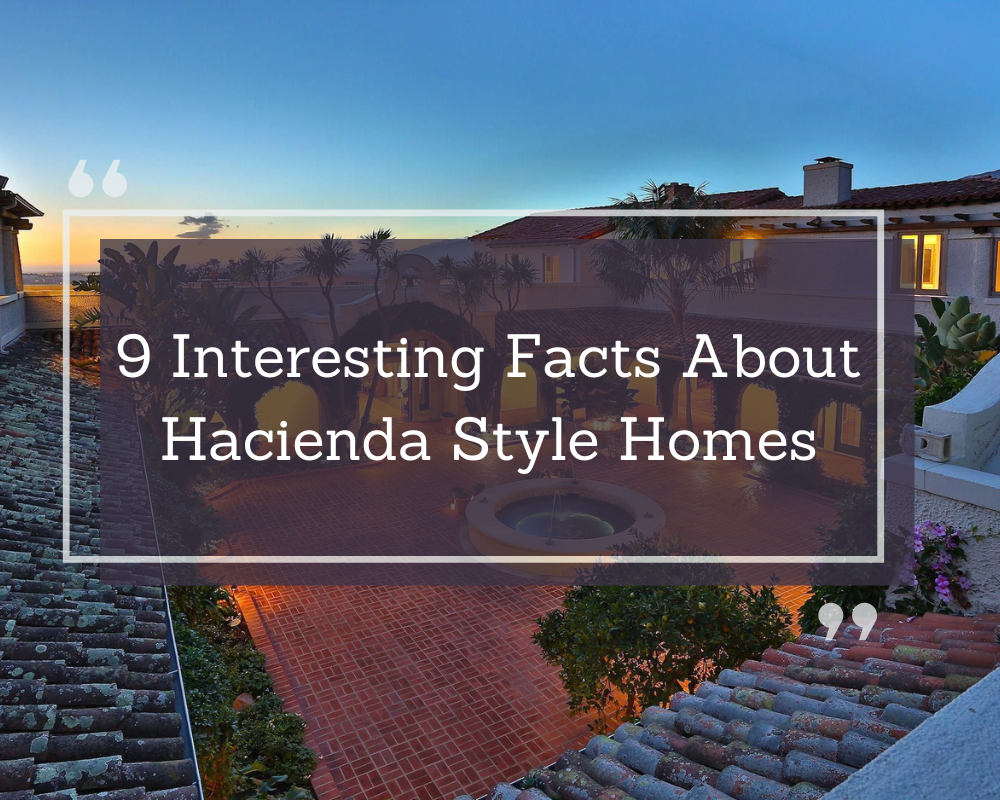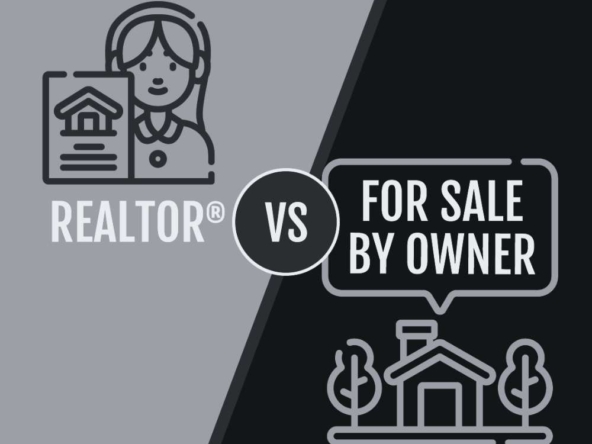Hacienda-style homes have long won homeowners over with their distinct blend of Spanish colonial architecture, Mediterranean influences, and Mexican design elements.
Hacienda style homes draw their inspiration from colonial Mexico and the American Southwest estates, boasting rich cultural traditions with timeless appeal that resonates today among homebuyers. Please keep in mind that Hacienda style homes in Las Vegas may be limited, though Spanish, Mediterranean, and Ranch styles are readily available. Homes built here often incorporate features and influences from these styles while adhering to contemporary floor plans.
9 Interesting Facts About Facts About Hacienda Style Homes

Let us delve into some interesting facts about Hacienda Style homes:
1. There Are Seven Main Types of Hacienda Style Homes
- Traditional Hacienda: Traditional haciendas emulate the iconic features of original Mexican and American Southwest haciendas, including large central courtyards with thick adobe walls and terracotta roof tiles; additional characteristics may include wrought-iron fixtures, artisanal tilework or rustic hand-carved wooden doors.
- Modern Haciendas: Modern haciendas combine contemporary design features with key traditional characteristics like open courtyards. Modern styles typically incorporate sleek architectural lines, large glass windows to bring in natural lighting, and minimalist interior design elements that contrast with rustic elements to achieve this sophisticated style.
- Coastal Haciendas: These coastal homes have been specifically tailored for coastal environments and feature open designs to increase ventilation. Their construction materials may even make them resistant to humid or salty air conditions and they usually boast larger outdoor living spaces with ocean views.
- Desert Haciendas: Desert haciendas often feature deep porches and high ceilings to provide cooling and shade in hot environments, and often feature exterior colors reflecting earthy tones characteristic of desert environments. Furthermore, using drought-resistant plants for landscaping purposes such as xeriscaping are often featured features of desert haciendas.
- Ranch-Style Hacienda: Ranch-style haciendas utilize single-story layouts common among ranch-style homes, featuring open floor plans with wide corridors. Incorporating rustic features like wooden beams or stone fireplaces.
- Urban Haciendas: Urban haciendas are homes designed specifically to adapt the classic Spanish homestyle of hacienda living for urban environments, often featuring smaller courtyards and compact architectural layouts suitable for city living. Although smaller in scale than typical haciendas, they tend to maximize space by including multifunctional areas like combined kitchen/dining areas; many different varieties exist with custom floor plans designed to suit various requirements of inhabitants living there.
- Luxury Haciendas: Luxury haciendas are luxurious variations on regular varieties that emphasize spaciousness and luxury with premium materials and elaborate landscaping, often including master suites and gourmet kitchens as well as amenities such as outdoor kitchens, infinity pools, or custom artisanal details.
2. Homes Can Be Traced Back to the 16th Century
Hacienda-style houses first emerged during the 16th Century in Mexico and the American Southwest regions that were under Spanish control at that time, often used for agriculture, mining, and cattle ranching, often owned by wealthy landowners themselves.
Haciendas quickly rose in popularity as symbols of wealth and status. By the 17th and 18th centuries, they had become integral components of local communities as well as rural family life in many regions across Spain and Portugal.
An additional factor contributing to their widespread appeal was their practical and effective designs, which protected them from harsh winds while simultaneously monitoring surrounding landscapes, as well as guaranteeing structural stability throughout varying weather conditions.
3. Defined by Courtyards
Hacienda-style homes can be identified by the characteristic courtyard that often boasts central stone pavers, fountains, and lush vegetation.
Architecturally, Hacienda courtyards integrate indoor and outdoor spaces by having rooms open directly into their center where family and friends can come together. Arches, colonnades, and intricate walkways often serve to shade this open area and offer space for relaxation, dining, and entertainment purposes. Hacienda courtyards often incorporate outdoor fireplaces or fire pits for added functionality.
4. Thick Adobe Walls Help Insulate Hacienda Style Homes
A key characteristic of Hacienda-style homes is their thick adobe walls, first used due to their superior insulation capabilities during the Spanish Colonial period.
Adobe walls rely on mass for their effectiveness as natural insulators, with wider walls possessing greater thermal mass to act as effective insulation against fluctuations in day/night temperature variances. Air trapped within these walls slows heat transfer rates significantly which makes adobe walls particularly helpful in climates with significant temperature variances between daytime temperatures and nighttime ones.
Adobe insulation performance can also depend on its exterior finish; light-colored finishes reflect sunrays for improved results in warmer climates while darker hues absorb heat in cooler areas. Hacienda style homes of today tend to feature earthy tones such as terracotta and ochre but may also come in white hues; typically sealed by protective coating to increase resistance against moisture intrusion and extend lifespan.
Adobe walls offer additional advantages beyond insulation; one such benefit is their exceptional resistance to weather and time; this makes them particularly desirable among homeowners looking for long-term solutions.
5. Some Modern Haciendas Utilize Stone Walls Instead of Adobe
Did you know that modern haciendas use natural durable stones like slate for their walls instead of traditional adobe? Stone’s increased resilience provides several key advantages over adobe walls in terms of long-term performance and resilience.
One benefit is insulation with increased structural strength and weatherproofing properties, while two is offering architects and builders more customizable ways to customize how homes appear; three provides earthy charm that blends nicely into modern designs.
Note: Not all modern haciendas utilize stone exteriors; there can be advantages in sticking to more classic-style exteriors too! Check out these amazing modern hacienda style homes featuring beautiful red exterior walls and a cozy modern interior!
6. Became Popular In the USA during the 1920s and 1930s
Hacienda-style homes witnessed an upsurge in popularity throughout the US during the 1920s and 1930s as part of a wider Spanish Colonial Revival architecture movement, which gained steam after 1915’s Panama-California Exposition held in San Diego.
At this exposition, buildings with Spanish and Mexican influences drew widespread interest, sparking increased construction projects featuring features characteristic of Hacienda style architecture in homes, hotels, and other structures across the U.S.
7. Historic Haciendas Combine Spanish, Moorish, Gothic and Renaissance Influences
Modern Old World Haciendas draw their inspiration from Spain and Mediterranean villas from the Renaissance periods; especially those featuring luxury floor plans.
Modern Old World Haciendas typically exhibit various characteristics:
- Grand Spanish courtyards feature
- Moorish-influenced tile work, intricate woodcarvings, and ornamental ironwork ornaments;
- Gothic architectural features like vaulted ceilings and pointed archways add visual interest and spatial dynamics.
- Renaissance-era designs emphasize symmetry, proportion, and classical elements such as classical motifs. To find some design inspiration or design ideas from old-world Haciendas on Pinterest.
8. Hand-Painted Tiles Are an Evocative Touch in Many Hacienda Style Homes
Hand-painted tiles add a distinct charm and personality to many Hacienda-style homes, often seen adorning walls, floors, and outdoor areas of these properties with patterns from Mexican or Spanish cultures that symbolize cultural influence.
Hand-painted tiles provide more than aesthetic value; they also help safeguard surfaces against wear and moisture damage.
9. Small Windows
There may be numerous reasons as to why hacienda style homes feature smaller windows. One, windows can help reduce heat. Two, small windows contribute to the strength and integrity of houses made with adobe or stone structures, without modern design techniques such as these larger openings could compromise it completely and threaten its integrity.
Three small windows provided additional protection and privacy from potential threats and the elements – especially important in rural or remote locations where many hacienda estates were situated.
Are You Searching For Hacienda Style Homes in Las Vegas? Check out the Las Vegas Real Estate Sales for the best and budget-friendly home!






